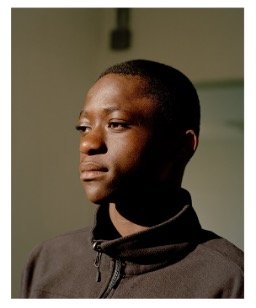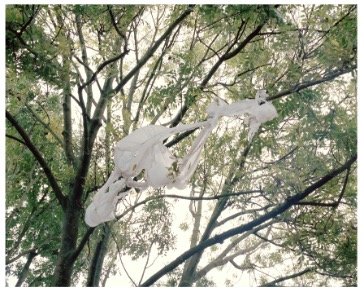Week 2 - Reflection
Consider what you Roland Barthes (1980: 89) means by this. Do you agree?
‘In the Photography, the power of authentication exceeds the power of representation.’
(Barthes 1980: 89)
I feel this statement is to simplistic for photographs. For the passport or identity portrait captured by the police potentially it could be argued the image is there to authenticate existence. But take these examples out of their confines and expand their existence, perhaps into a gallery setting, and they become objects of representation rather than just proof of existence.
We could consider the photograph and camera as the device of confirmation due to things having to exist in order to be captured. If this is done, we must also contemplate the idea that the camera was fitted with a rectangle frame, as Arnheim suggests:
‘Whereas a round lens “naturally” creates a circular image which shades off into obscurity around it circumference, the portable camera obscura of the early ninetieth century was fitted with a square or rectangular ground glass which only showed the centred part of the image made by the lens.’
(Arnheim 1974)
This means photographys and the photograph are already inauthentic and will always be a representation of what the controller puts in that rectangle, only representing the scene in front of the camera.
We also need to understand that whilst the camera is a machine lacking in emotion coldly recording at its controller’s command. An audience will bring emotion to the reading of a photograph which can mean elements of that image are given undue focus and attention that the camera as an object would not. The sharing, explanation and understanding of photographs can also bring new or differing focus to images.
Bathes effectively tells us this too when writing about The Winter Garden Photograph:
‘It exists only for me. For you, it would be nothing but an indifferent picture…’
(Barthes 1980: 73)
He is restricting us from the image and telling us we would not understand or have the same emotional connection that he, the possessor of the image has. If the power of authentication exceeded the power of representation, he would have printed the photograph, trusting the audience to have a similar emotional connection and giving authenticity to his emotional response in the understanding that the audience may be able to share in this experience.
Reflect on any ways in which you feel your work might ‘authenticate’ and/or ‘represent’.
I feel that currently my work both authenticates and represents, but I lean more towards the idea of representation. My work authenticates the existence of a place in a particular series of moments. It places people and objects in a location and certain times of the day. These are all functional actions of the photograph anyway. To a point the images I have made so far represent an experience of time spent with people in a specific location. It represents what catches the eye as I or others might move through the space that I have been photographing. It may not be what everyone sees or finds interesting but it represents potential moments, places, people and objects of interest whilst exploring a location.
Identify any approaches/practices/practitioners that specifically resonated with you.
Rudolf Arnheim’s ‘On the Nature of Photography’ resonated with me particularly when writing about Muybridge photographing the galloping horses:
‘…but the proposition could only be confirmed by other photographs, not direct observation.’
(Arnheim 1974)
This rings true with the images that I want to produce and experience I want to represent. One image is not going to give an accurate representation of the Oxford Road it will take a series of images which when supporting each other will confirm and give insight into the place.
This does start to make my argumentative point about Barthes being wrong weaker as the images in a sequence could authorise the concept and feeling a viewer is experiencing and in reality the photographs might only represent a small sample of a person’s possible experience in the location.
Outline/summarise your independent research (eg interviews or reviews of relevant practice/reading).
Paul Graham’s interview with the Louisiana Channel was part of my independent research.
‘…and that flow between life moving and passing you by, coming round the corner and you just stand there and wonder and look at that happening…’
(Louisiana Channel 2022)
From this I considered the flow of the place I was photographing and to a point took the pressure off me wanting and expecting portraits and landscape images to be interesting all the time. It has made me take time over the images and treat the experiences I have carefully, so they reflect and represent the flow of life on Oxford Road.
I also looked at the DREAMLINES – Picturing Bristol High Streets project, particularly the work of Jade Carr-Daley and Cian Oba-Smith’s Andover and Six Acres project. Similarly, both sets of images reassured me that what might be considered mundane is interesting, the everyday flow of life and work can be interesting when observed and recorded.
Evaluate the development of your own photographic practice to date.
I have moved from static, editorial style portraits and have started utilising the flow and world around me on the road. I’m worrying less about lighting conditions which has led to more interesting and engaging work. I want to continue doing this and exploring the concept of looking, producing sequences and trying to represent the experience of looking and flow of the road.
Reflect on the peer/tutor feedback received on your current/future practice.
There were some good suggestions in my peer/tutor session. A few nice comments about my portraits which was kind.
Michelle Sank suggested looking at her project Burnt House Lane and watching the video attached to the Kickstarter project for an in-depth explanation.
There were references to the importance of context in images. In some portraits I have gotten closer than needed which removes the information about the location. Bring this back in could ground the work more and lead to further successful portraits.
Consider the edges of the frame, what is going on around the outside of the focal point by including or removing elements of the image by moving around can you contextualise the person or object more and create a more successful image.
Moving forwards:
What are your action points?
- Look at Sank’s Burnt House Lane project.
- Ensure context is in the images.
Where are you going next?
- I am going to look at more photographic work. Beyond Sank I want to revisit Halpurn’s ZZYZX. I feel there is and exciting flow to this project and it does not fit with the conventions of documentary or portraiture.
- I am going to continue photographing the Oxford Road, particularly looking at people and aiming to take a step back to contextualise the portraits I am taking.
LOUISIANA CHANNEL. 2022. ‘“Photography Lacks Intentionality.” | Photographer Paul Graham | Louisiana Channel’. YouTube. Available at: https://www.youtube.com/watch?v=H7H5LP_u81Y [accessed 30 Jan 2024].
ARNHEIM, Rudolf. 1974. ‘On the Nature of Photography’. Critical Inquiry 1(1), 149.
BARTHES, Roland. 2000. Camera Lucida : Reflections on Photography. London: Vintage.
CARR-DALEY, Jade. 2023. ‘DREAMLINES — Picturing Bristol High Streets’. Jadecarrdaley.com [online]. Available at: https://jadecarrdaley.com/DREAMLINES [accessed 31 Jan 2024].
OBA-SMITH, Cian. 2022. ‘Andover & Six Acres’. Cianobasmith.co.uk [online]. Available at: https://cianobasmith.co.uk/Andover-Six-Acres-Text [accessed 31 Jan 2024].



